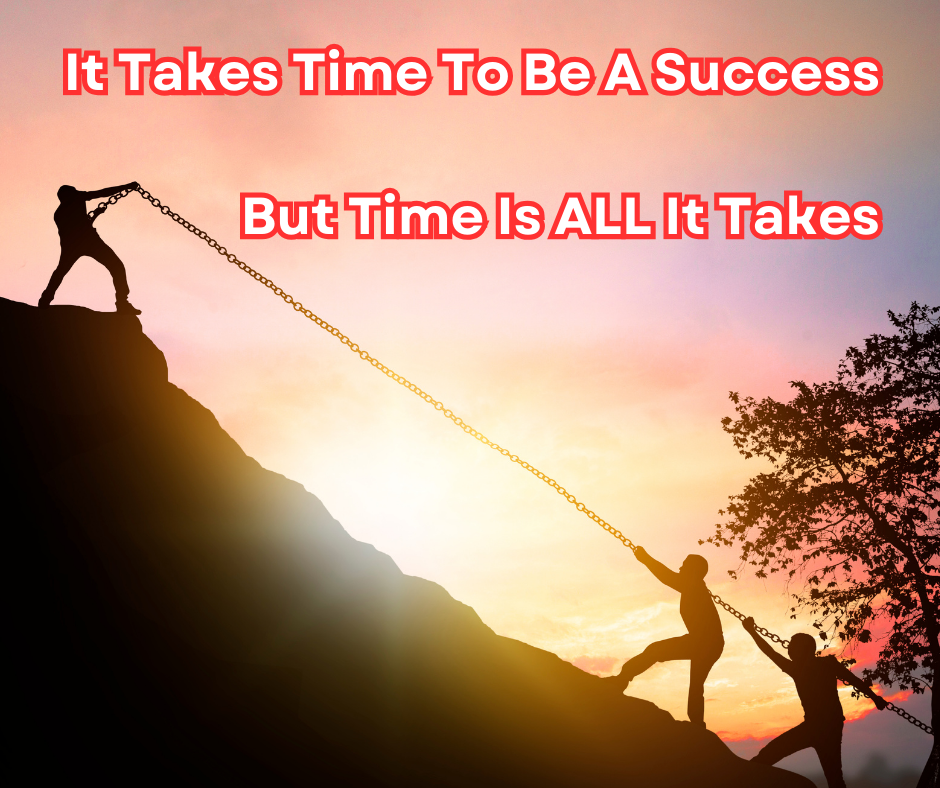Best Focused Work Period Techniques & Benefits
Key Discussions Relating To Focused Work Period Techniques
- Focused work periods can significantly boost productivity by eliminating distractions.
- The Pomodoro Technique involves working in 25-minute blocks with short breaks in between.
- Time blocking helps allocate specific times for tasks, ensuring focus and organization.
- 90-minute work sessions align with natural attention spans, maximizing efficiency.
- Creating a distraction-free environment is crucial for maintaining deep focus.
Understanding Focused Work Periods
In today’s fast-paced world, distractions are everywhere. From social media notifications to endless emails, it’s easy to lose focus on what’s truly important. That’s where focused work periods come into play. By dedicating specific blocks of time to concentrate solely on a particular task, we can achieve higher levels of productivity and efficiency.
What are Focused Work Periods?
Focused work periods are designated chunks of time where you work on a task without interruptions. The goal is to dive deep into your work, allowing for intense concentration and creativity. This concept isn’t new; it’s rooted in the idea of deep work, which emphasizes the importance of uninterrupted focus for producing high-quality results.
Key Benefits
The benefits of focused work periods are numerous. For starters, they allow you to produce more work in less time. By eliminating distractions, you can maintain a steady flow, leading to faster completion of tasks. Moreover, focused work periods can enhance the quality of your work. When you’re not constantly switching between tasks, your brain can fully engage with the material, resulting in more thoughtful and precise outcomes.
Additionally, these periods can reduce stress. Knowing that you have dedicated time to tackle specific tasks can alleviate the pressure of juggling multiple responsibilities at once. It provides a structured approach to your workday, helping you manage your time more effectively.
Myths about Productivity and Focused Work
“Multitasking is the key to productivity.” This common belief is actually a myth. Studies have shown that multitasking can lead to a 40% drop in productivity. Instead, focused work periods, where you concentrate on one task at a time, are far more effective.
Another myth is that longer work hours equal more productivity. In reality, working for extended periods without breaks can lead to burnout and decreased efficiency. Focused work periods encourage breaks, allowing for mental rejuvenation and sustained productivity.
Top Techniques for Focused Work Periods
Now that we understand the importance of focused work periods, let’s explore some techniques to implement them effectively. These methods are designed to help you harness the power of concentration and maximize your productivity.
Pomodoro Technique
The Pomodoro Technique is a popular method that involves working in short, timed intervals. Here’s how it works:
- Choose a task you want to work on.
- Set a timer for 25 minutes (one Pomodoro).
- Work on the task until the timer goes off.
- Take a 5-minute break.
- Repeat the cycle four times, then take a longer break (15-30 minutes).
This technique is effective because it creates a sense of urgency, encouraging you to focus intensely during each Pomodoro. The regular breaks also help prevent burnout and keep your mind fresh.
Time Blocking Strategy
Time blocking is another powerful technique for managing focused work periods. It involves scheduling specific blocks of time on your calendar for different tasks. By doing so, you allocate dedicated time for each activity, ensuring that you have the necessary focus to complete them.
To implement time blocking:
- Identify your most important tasks for the day.
- Assign each task a specific time slot on your calendar.
- Stick to the schedule, avoiding any distractions during each block.
This strategy not only helps you prioritize your tasks but also provides a clear roadmap for your day, reducing the chances of procrastination.
90-Minute Work Sessions
Research suggests that our brains can maintain peak focus for about 90 minutes at a time. Therefore, structuring your work periods around this natural attention span can enhance productivity. During a 90-minute work session, you can delve deep into your work, allowing for substantial progress on complex tasks.
After each session, take a 15-30 minute break to recharge. This cycle of intense focus followed by rest helps maintain your energy levels throughout the day.
Optimizing Your Environment for Focus
Besides adopting techniques for focused work periods, it’s crucial to create an environment that supports concentration. A well-optimized workspace can significantly enhance your ability to focus and get things done.
Creating a Distraction-Free Zone
One of the most effective ways to improve focus is by minimizing distractions in your workspace. Start by identifying common distractions, such as your phone, social media, or noisy surroundings. Then, take steps to eliminate or reduce these distractions during your work periods.
Consider using noise-canceling headphones, turning off non-essential notifications, and setting boundaries with colleagues or family members to minimize interruptions. Creating a distraction-free zone can help you maintain the deep focus necessary for productive work.
Importance of an Organized Workspace
An organized workspace is not just about aesthetics; it plays a critical role in enhancing focus and productivity. When your environment is clutter-free, your mind is less likely to be distracted by visual noise. This clarity allows you to concentrate better on the task at hand.
Start by keeping only the essentials on your desk. A clean and tidy workspace can significantly reduce stress and improve your efficiency. Moreover, an organized space makes it easier to find things, saving you time and keeping your workflow uninterrupted.
Using Tools and Technology to Enhance Focus
In today’s digital age, technology can either be a distraction or a powerful tool to boost your focus. By leveraging the right tools, you can create an environment that minimizes interruptions and maximizes productivity.
Consider using apps designed to block distracting websites or limit your time on social media. Timer apps can also help you implement techniques like the Pomodoro Technique, keeping you on track and ensuring regular breaks.
- Focus@Will: This app uses scientifically optimized music to improve concentration.
- Forest: Helps you stay focused by planting virtual trees as you work.
- RescueTime: Tracks your digital activities and provides insights into your productivity patterns.
By integrating these tools into your routine, you can create a digital environment that supports your focus and productivity goals.
Incorporating Rests to Maximize Productivity
While focused work periods are essential, it’s equally important to incorporate rests into your routine. Breaks allow your brain to recharge, preventing fatigue and maintaining high levels of productivity throughout the day.
Understanding the different types of breaks and how to use them effectively can make a significant difference in your work performance.
Types of Breaks: Short vs. Long
| Type of Break | Duration | Purpose |
|---|---|---|
| Short Break | 5-10 minutes | Quick mental reset, prevent burnout |
| Long Break | 15-30 minutes | Deeper rest, rejuvenate energy |
Short breaks are ideal for refreshing your mind during work sessions. They can be as simple as stretching, taking a walk, or doing a quick meditation. These breaks help maintain your focus and prevent burnout.
Long breaks, on the other hand, provide a more substantial rest. They are perfect for activities that require more time, such as having a meal, engaging in a hobby, or taking a power nap. These longer breaks are crucial for recharging your energy and ensuring sustained productivity.
Effective Activities During Breaks
To make the most of your breaks, engage in activities that truly refresh your mind and body. Here are some effective break-time activities:
- Physical Exercise: A quick workout or walk can boost your energy levels and improve concentration.
- Meditation: Even a few minutes of mindfulness can clear your mind and reduce stress.
- Creative Pursuits: Drawing, writing, or playing an instrument can stimulate different parts of your brain.
By choosing activities that resonate with you, your breaks can become a valuable tool for enhancing your productivity and overall well-being.
Signs It’s Time to Take a Break
Recognizing when to take a break is crucial for maintaining productivity. Common signs include feeling fatigued, struggling to concentrate, or making frequent mistakes. Listening to these signals and taking timely breaks can prevent burnout and keep your work performance at its peak.
Benefits of Group Focus Time
While personal focus time is beneficial, group focus sessions can amplify productivity through collaboration and shared goals. Working together in a focused manner can lead to more innovative solutions and faster problem-solving.
Synchronized Team Focus Sessions
In synchronized team focus sessions, team members work on individual tasks while being aligned towards a common objective. This approach fosters a sense of unity and accountability, enhancing both individual and collective productivity.
During these sessions, it’s important to set clear goals and communicate effectively. Regular check-ins and updates can keep everyone on track and ensure that the team’s efforts are aligned with the desired outcomes.
Communication and Collaboration During Focus Blocks
Effective communication is key to successful group focus sessions. Team members should feel comfortable sharing ideas and feedback. Tools like collaborative software and virtual meeting platforms can facilitate seamless communication, even in remote settings.
Collaboration during focus blocks can lead to innovative solutions and improved project outcomes. By leveraging each team member’s strengths, the group can achieve more than the sum of its parts.
Challenges and Solutions in Team Focus Time
One of the main challenges in team focus sessions is managing different work styles and paces. To address this, it’s essential to establish clear guidelines and expectations from the outset.
Another challenge is minimizing distractions during group sessions. Encourage team members to turn off notifications and limit unnecessary interruptions. By creating a conducive environment, the team can maintain focus and achieve their goals more efficiently.
Ultimately, with effective strategies and communication, group focus time can become a powerful tool for enhancing team productivity and achieving collective success.
Practical Tips to Implement Focused Work Techniques
Integrating focused work techniques into your daily routine doesn’t have to be complicated. With a bit of planning and discipline, you can transform the way you work and achieve greater productivity.
Daily Planning and Scheduling
Start by planning your day with focused work periods in mind. Use a planner or digital calendar to block out specific times for your most important tasks. During these blocks, eliminate distractions and commit to staying focused on the task at hand.
Consider using color-coding to differentiate between different types of activities, such as meetings, deep work, and breaks. This visual organization can help you stay on track and ensure that you allocate enough time for each task.
Tracking and Measuring Your Focus Results
To understand the effectiveness of your focused work periods, track your progress and results. Note down the tasks you complete during each session and how long they take. This data can provide insights into your productivity patterns and help you identify areas for improvement.
Additionally, consider using productivity apps that offer tracking features. These tools can help you visualize your work habits and make informed adjustments to your routine.
Adapting Techniques to Your Personal Style
Everyone’s work style is unique, so it’s important to adapt focused work techniques to suit your preferences. Experiment with different methods, such as the Pomodoro Technique or time blocking, to find what works best for you.
Be flexible and open to change. If a particular technique isn’t yielding the desired results, don’t hesitate to try something new. The key is to find a system that enhances your focus and productivity, while also aligning with your personal work style.
Frequently Asked Questions About Focused Work Period Techniques
Here are some common questions about focused work periods and how they can enhance productivity.
How do Focused Work Period Improve Productivity?
Focused work periods improve productivity by minimizing distractions and allowing for deep concentration on a single task. This uninterrupted focus leads to faster task completion and higher quality work. Additionally, structured work periods reduce stress by providing a clear plan for tackling your workload. For more strategies on maintaining focus, check out The Complete Guide to Focus Time.
What is the Ideal Duration for a Focused Work Period?
The ideal duration for a focused work period varies depending on individual preferences and the nature of the task. However, many people find that 25- to 90-minute sessions are effective. Shorter intervals, like those in the Pomodoro Technique, are great for tasks that require bursts of concentration, while longer sessions are ideal for deep, complex work.
Ultimately, the best duration is one that allows you to maintain focus without feeling fatigued or overwhelmed. Regular breaks are essential for sustaining productivity over time.
Can Technology Help in Achieving Focused Work?
Yes, technology can be a valuable ally in achieving focused work. Productivity apps, such as timers and distraction blockers, can help you stay on track and minimize interruptions. Tools like Focus@Will and RescueTime offer personalized solutions for enhancing concentration and tracking your productivity.
However, it’s important to use technology mindfully. Ensure that the tools you choose align with your goals and don’t become distractions themselves.
How Can I Encourage My Team to Participate in Group Focus Sessions?
Encouraging your team to participate in group focus sessions starts with clear communication and setting expectations. Explain the benefits of focused work and how it can enhance both individual and team productivity.
Schedule regular focus sessions and provide the necessary resources, such as collaborative tools and quiet spaces. Encourage open communication and feedback to continuously improve the process. By fostering a culture of focus and collaboration, you can motivate your team to embrace these sessions and achieve greater success together.
What Should I Do If I Struggle to Stay Focused?
If you find it challenging to stay focused, start by identifying the root cause of your distractions. Common culprits include a cluttered workspace, digital interruptions, or lack of motivation. Once you’ve pinpointed the issue, take steps to address it, such as organizing your environment or setting boundaries with technology.
Additionally, practice mindfulness and stress-reduction techniques to improve your concentration. Remember, focus is a skill that can be developed with practice and persistence.
















